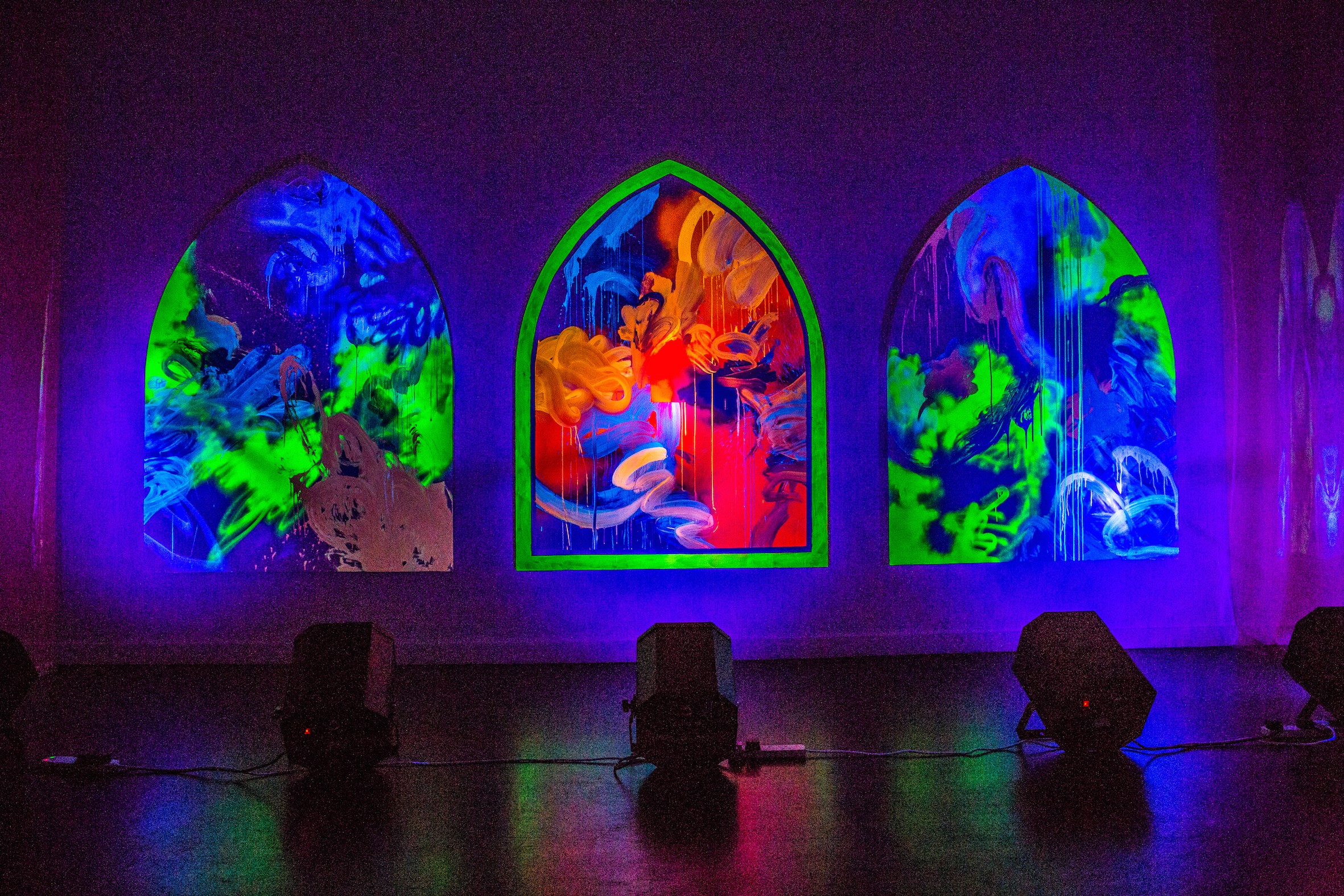Royal Academy of Arts Magazine, London
Article
2025
émergent, London
Interview
2025
C-Mine, Genk
Exhibition Text
2025
Hannah Barry Gallery x Foolscap Editions, London
Editor
2025
Lo Brutto Stahl, Paris & Basel
Exhibition Text
2024
Hannah Barry Gallery x Foolscap Editions, London
Editor
2024
émergent, London
Interview
2024
DUVE, Berlin
Exhibition Text
2024
émergent, London
Interview
2024
Incubator, London
Exhibition Text
2023
QUEERCIRCLE, London
Exhibition Text
2023
L.U.P.O., Milan
Catalogue Essay
2023
Tarmac Press, Herne Bay
Catalogue Essay
2023
Brooke Bennington, London
Exhibition Text
2023
Freelands Foundation, London
Catalogue Essay
2023
superzoom, Paris
Exhibition Text
2023
Lichen Books, London
Catalogue Essay
2022
Tennis Elbow, New York
Exhibition Text
2022
émergent, London
Interview
2022
Guts Gallery, London
Exhibition Text
2021
Kupfer Projects, London
Exhibition Text
2021
Collective Ending, London
Catalogue Essay
2021
L21 Gallery S’Escorxador, Palma De Mallorca
Exhibition Text
2021
TJ Boulting, London
Exhibition Text
2021
'Sacrifice is nothing other than the production of sacred things.'
– Georges Bataille, 1973
Rave culture has long been associated with forms of religiosity, from the gospel-inspired exhilaration of house and garage, to the messianic arch of the DJ booth and its convulsing mass of blissed-out disciples. Entering a rave, one surrenders to this ideal of secular reverence, and in doing so must sacrifice themselves to an unknowable and unlimited ecstasy. The Tabernacle: Welcome to Pharmakon is an exhibition of new works by Kate Dunn that aspires to this sense of sacrifice. It is a rapturous and transitional zone, an ineradicable need to leave behind the world as reflected and ordered by consciousness and to sink temporarily into the dark night of the moment. Through a multi-sensory installation of large-scale paintings, ultraviolet light and a specially conceived hardcore soundtrack produced by Shoobz Darg, The Tabernacle evokes this iridescent darkness in order to call forth the body of a spectral and sacrificial world.
Nowhere is this clearer than Dunn’s use of UV-reactive pigments as a spectral medium for her paintings. Dispersed across the canvas in large gestural strokes, their photoluminescent properties absorb and reflect light through a shifting series of metaphysical states: first seen under natural light, they are then submerged into the hypnotic and other-worldly prism of ultraviolet (a spectrum of the visual field not unfamiliar to ravers) to be finally engulfed in total darkness, glowing with unaccountable radiance in azure, scarlet and jade. Coupled with the formal register of Gothic arches, the exhibition’s architectural ode to the ancient nomadic temple of the Tabernacle, Dunn’s coruscating sequence confers an illuminatory urge, a visual sublimity that perturbs and extends the threshold of the sensible. It is a visual matrix that transcends our default mode of perception and is at the same time fundamentally tethered to the body — a sacrificial and ceremonial space that calls forth and enraptures the embodied self.
For Dunn, this emphasis on the body and sacrifice is central to an experience of the sacred. Not only must we transcend spiritually, but it is through a simultaneous reckoning of the body, its
annihilation and sacrifice in moments of extreme ecstasy, that we can pierce the threshold of continuity and exit the profane world. Initiated in Rotterdam during the early 1990s, the stampeding dancefloors of gabber and hardstyle were a jackhammer to the spine of acid-house’s rapturous acolytes. Where the latter had advocated for trance-like effervescence, hardcore was a self-professed cult of velocity – a propulsion of rave’s smiley-faced benevolence to an adrenalizing and insomniac bodily extreme. Pounding through the luminous milieu of The Tabernacle, the entropic and distorted kick drums of Darg’s composition express the vexed omnipotence of the sacred, the forces of which are inextricably bound up, not only with euphoria and ecstasy, but with terror, devastation and sacrifice.
For those baptized in the principles of rave, this simultaneous relinquishment and intensification of the body is essential to its core mysticism, a festive and transgressive impulse that severs the bonds of a life fettered to rational imperatives of work and accumulation. In his posthumous work, The Theory of Religion, philosopher Georges Bataille writes that the sacred is 'a privileged moment of communal unity, a moment of the convulsive communication of what is ordinarily stifled.' The Tabernacle, as with rave, is precisely this will to excess: a space of expenditure that sublimates the originary abyss of disorder and chaos into a zone of shared intensity and common sense. The religiosity of rave is nothing other than this sacrificial drive for the sacred, a compulsion to expose to ourselves to an unstructured continuity with the cosmos, the effervescent source that glistens brightly behind the appearance of mere things.

COEVAL, Berlin
Interview
2021
Quench Gallery, Margate
Exhibition Text
2021
COEVAL, Berlin
Interview
2021
COEVAL, Berlin
Interview
2021
Foolscap Editions, London
Catalogue Essay
2020
Gentrified Underground, Zurich
Catalogue Essay
2020
Camberwell College of Arts, London
Exhibition Text
2019
Kronos Publishing, London
Editor
2019
Elam Publishing, London
Editor
2019
William Bennington Gallery, London
Catalogue Essay
2019
Elam Publishing, London
Catalogue Essay
2018
Camberwell College of Arts, London
Exhibition Text
2018
Limbo Limbo, London
Exhibition Text
2017
Saatchi Art & Music Magazine, London
Review
2017
B.A.E.S., London
Exhibition Text
2016